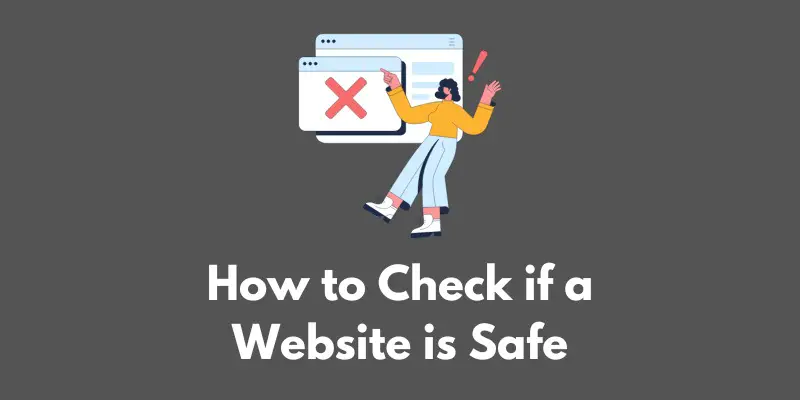In today’s digital age, it’s more important than ever to be cautious about the websites we visit.
With just a few clicks, we can easily access a vast amount of information and resources online.
However, not all websites are created equal. Some websites may not be as safe as they seem, and visiting them can have serious consequences.
Malware, phishing scams, and other online threats can put our personal and financial information at risk.
It’s essential to take the time to check the safety of a website before accessing it to protect ourselves from these potential dangers.
In this blog post, we’ll go over some simple but effective tips for determining whether a website is safe to visit.
By following these guidelines, you can browse the web with confidence, knowing you are protecting yourself and your personal information.
1. Tips for checking the safety of a website
When it comes to checking the safety of a website, there are a few key factors to consider.
Here are some tips to help you determine whether a website is safe to visit:
- Look for the padlock icon in the address bar. When you visit a website, look for the padlock icon in the address bar. This icon indicates that the website is using a secure connection, which helps protect your personal and financial information from being intercepted by hackers.
- Check the website’s URL for suspicious characters or spelling errors. Be on the lookout for suspicious characters or spelling errors in the website’s URL. These could be signs that you are on a phishing website, which is designed to trick you into entering your personal information.
- Check the website’s privacy policy and terms of service. A website’s privacy policy and terms of service can provide valuable information about how the website handles your personal data. Make sure to read these documents carefully to understand what you are agreeing to when you use the website.
- Use online tools to check the website’s reputation. There are several online tools that can help you check the reputation of a website. Some popular options include Google Safe Browsing and Norton Safe Web. These tools can help you determine whether a website has a history of hosting malicious content or engaging in other suspicious activity.
By following these tips, you can feel more confident about the websites you visit and protect yourself from potential online threats.
2. Advanced measures for checking the safety of a website
While the tips above can help you determine the safety of a website, there are also some advanced measures you can take to further ensure the website’s safety.
Here are a few additional steps you can take:
- Check the website’s SSL certificate. SSL (Secure Sockets Layer) is a technology that encrypts the data transmitted between a website and your device. To check a website’s SSL certificate, look for the padlock icon in the address bar and click on it. This should bring up a window with information about the certificate, including the issuing authority and the expiration date. Make sure that the certificate is valid and has been issued by a reputable authority.
- Check the website’s WHOIS information. WHOIS is a public database that stores information about domain names and their owners. You can use a WHOIS lookup tool to view the WHOIS information for a website and see who owns the domain. This can be useful for identifying potentially suspicious websites.
- Check the website’s history using the Wayback Machine. The Wayback Machine is an online archive of the internet that allows you to view the history of a website. By accessing the Wayback Machine, you can see how a website has changed over time and identify any red flags.
By following these advanced measures, you can further ensure the safety of a website before visiting it.
While it may take a bit more time and effort, these steps can provide an extra layer of protection and peace of mind when browsing the web.
Conclusion
In conclusion, it’s essential to take the time to check the safety of a website before visiting it.
The internet can be a vast and often overwhelming place, and not all websites are safe to access.
By following the tips and advanced measures outlined in this blog post, you can protect yourself from potential online threats and ensure that you are accessing a safe website.
Taking the time to check the safety of a website may seem like an added inconvenience, but it’s a small price to pay for the peace of mind that comes from knowing you are protecting yourself and your personal information.
So the next time you visit a new website, take a few minutes to check its safety. Your online safety is worth it.








